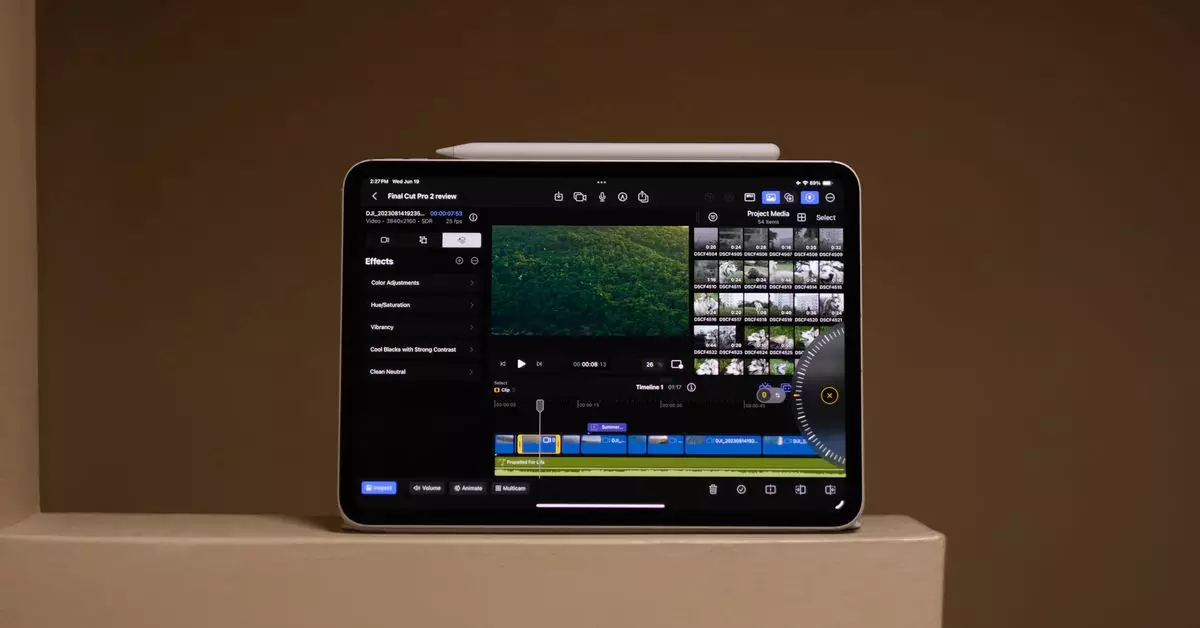As a supervising video producer with over a decade of experience, I recently had the opportunity to edit in the newest version of Final Cut Pro for the iPad. The original release of this app last year left many professionals feeling underwhelmed due to its limited tools that made it hard to use on a daily basis. The latest version, confusingly named “Final Cut Pro for iPad 2,” has just been released, and it still does not entirely address the limitations of the previous version. However, despite my initial frustrations, I have begun to discover the joy of using it.
One of the most significant new features in this year’s release is not actually a Final Cut Pro feature but a brand-new app that integrates with it. The Final Cut Camera app, designed for the iPhone, provides advanced camera controls such as peaking, manual focusing, and audio metering. This app can be used in conjunction with Final Cut Pro on the iPad to record Live Multicam sessions with footage streaming in from up to four iPhones or iPads. This new feature is particularly appealing for video podcasts, as it allows users to monitor footage, zoom in, and adjust various settings on the fly.
Challenges and Limitations
Despite the exciting new features, Final Cut Pro for iPad still has its limitations. One of the standout features in this year’s update is external hard drive support, a feature that was conspicuously absent in the previous version. However, the app’s handling of file management remains subpar, as all media files must reside within the FCP Library files stored on either the internal or external drive. This limitation means that users cannot split their media across multiple drives or cloud storage, leading to constant file duplication.
Moreover, the app still lacks essential features that are standard in professional video editing software, such as the ability to import complete folders, organize files into separate bins, or use adjustment layers. Live Drawings, a unique feature to the iPad version, allows users to draw animations directly onto clips using an Apple Pencil, but there is limited functionality beyond basic drawing capabilities.
While Final Cut Pro for iPad has its strengths, the increasingly competitive landscape of mobile video editing apps presents a challenge. Apps like CapCut, DaVinci Resolve, and Lumafusion offer a wide range of features and capabilities that Final Cut Pro for iPad currently lacks. Users are drawn to these apps for their robust editing tools, project sharing capabilities, and various other features that are missing in Final Cut Pro.
One aspect where Final Cut Pro for iPad excels is in its touch-first approach to editing. Apple has designed the app to prioritize touch controls, creating a more immersive editing experience for users. While this approach may not be as efficient as traditional mouse and keyboard editing, it offers a unique and engaging way to interact with the editing process. However, Apple still has work to do in terms of addressing the missing features and improving the overall functionality of the app to compete with other leading editing apps in the market.
Final Cut Pro for iPad offers a promising glimpse into the future of touch-first video editing. While the app has made significant strides in integrating new features and improving the overall user experience, it still falls short in key areas compared to its competitors. By addressing the limitations, adding essential features, and enhancing the overall functionality, Apple can position Final Cut Pro for iPad as a leading mobile video editing solution in the market.


Leave a Reply